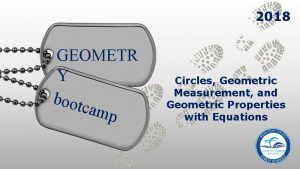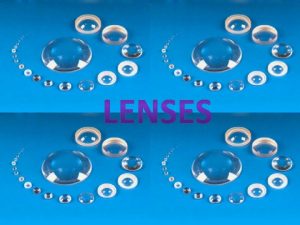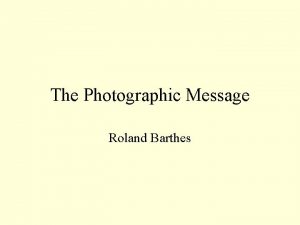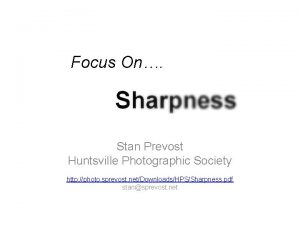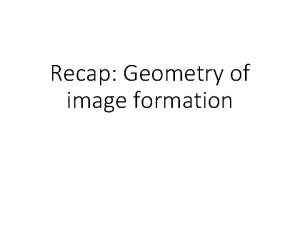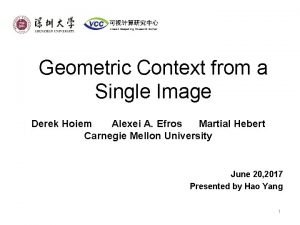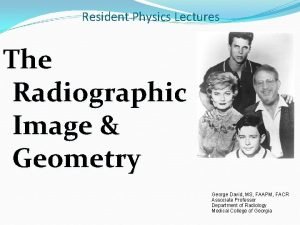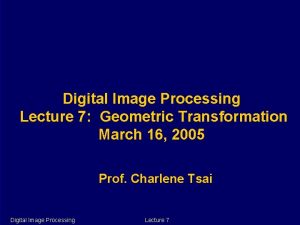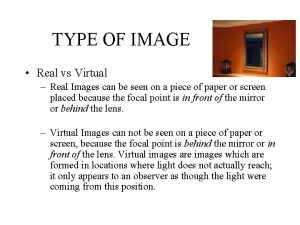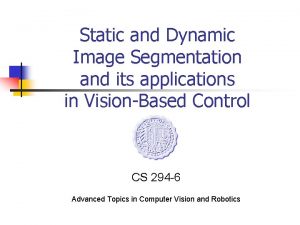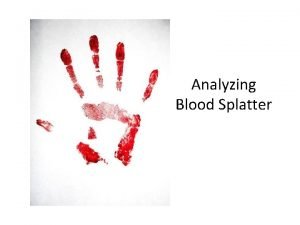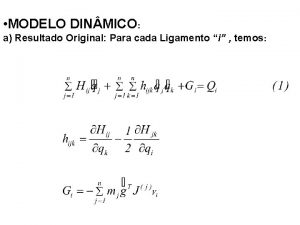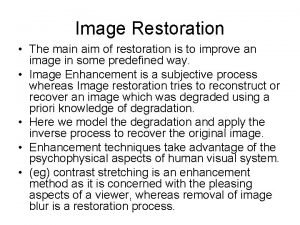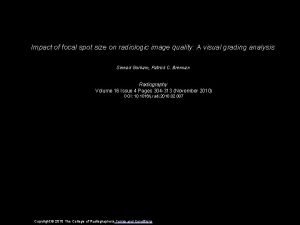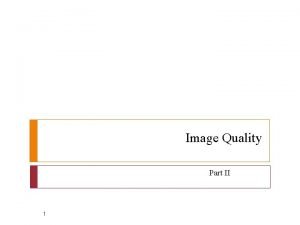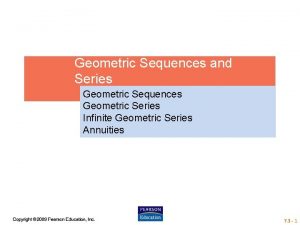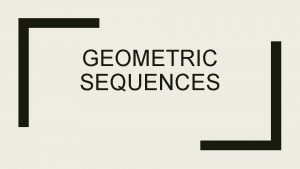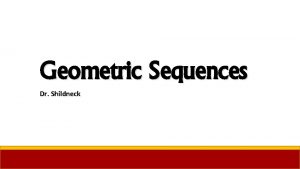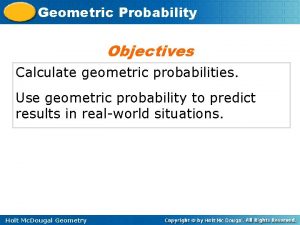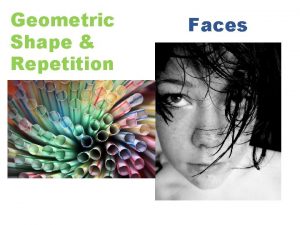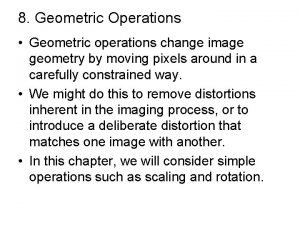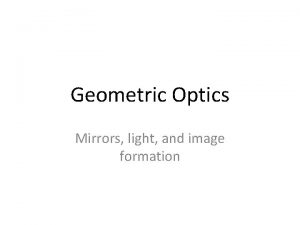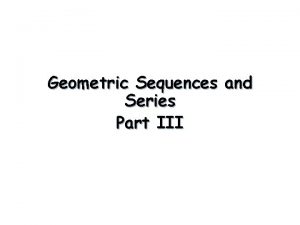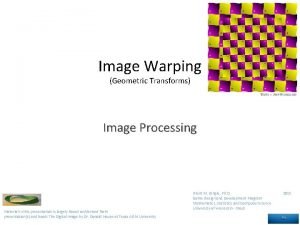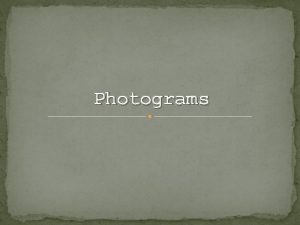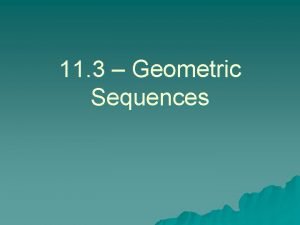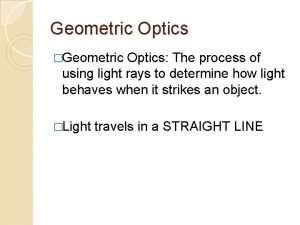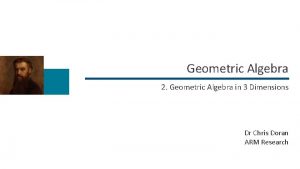Part I 1 Image Quality Photographic Quality Geometric




















































- Slides: 52

* Part I 1

*Image Quality * Photographic Quality * Geometric Quality * 2

*Photographic Quality *Geometric Quality * 3

* Contrast * Density * Geometric * Detail * Distortion * Radiolucent * Radio-opaque * Tissue density * Optical density * Radiographic contrast * Subject contrast * m. As reciprocity rule * m. As doubling rule * 15% k. Vp rule * Long scale contrast * Short scale contrast * High/low contrast * Absorption * Differential absorption * Step wedge * Grid * Beam filtration * Anatomic density * Over-exposed * Under-exposed * Over penetrated * Under penetrated * saturation * 4

*The films or images have different levels of density – different shades of gray *X-rays show different features of the body in various shades of gray. *The gray is darkest in those areas that do not absorb X-rays well – and allow it to pass through *The images are lighter in dense areas (like bones) that absorb more of the X-rays. *Why you see what you see… 5

* The radiograph is formed by x-ray photons reaching the image receptor. 6

Density Contrast Detail Distortion *Image quality 7

* The overall darkening of the image 8

2 4 3 1 9

4 5 3 2 1 10

11

v Anatomic Density v Body part/object being x-rayed v Atomic # v Thickness of part v Optical Density v Amount of x-ray photons reaching the image receptor v The m. A applied v The time applied v Also referred to as x-ray output * 12

13

*m. A *One milli-ampere is equal to one thousandth of an ampere. *The amount of current supplied to the x-ray tube *Range 10 to 1200 m. A * 14

*In seconds *How long x-rays will be produced *0. 001 to 6 seconds * 15

* m. A X s = m. As 16

10 m. A 1000 m. A 17

* 18

* DENSITY directly proportional to m. As 100 m. As 19 + 25%m. AS = 25% increase in density +50% m. As = 50% increase in density

*Density is like toast…too much and the toast is burned, too little and it is underdone. *The images differ in density only. Which one looks optimal to you? * 20

This image was taken at 60 m. As. This Image is overall too dark. What would you do to fix this image? This image was taken at 300 m. A. What was the time of the exposure? * 21 If we wanted to change the m. A but keep the m. As the same, what would we do?

* 22

When m. A is unknown… The image was shot at 45 m. As using a. 75 second exposure. What is the m. A? When s is unknown…. The image was shot at 80 m. As using the 400 m. A station. What was the time of exposure? * 23

24

* 25

*Density (optical density, image density) *m. As * k. Vp * SID * Beam Filtration * Beam restriction * Body part thickness * grids 26

* k. Vp more energy = more photons passing though tissue & striking the image á 15% k. Vp = doubling of exposure to the film 15% k. Vp = halving of exposure to the film 15% rule will also change the contrast of the image because k. V is the primary method of changing image contrast. Remember : 15% change ( ) KVP has the same effect as doubling or ½ the MAS on density 27

This is an actual arm tatoo. Now that’s dedication ! I a n w v e r s e 28 s q u a r e I a n w v v e e r r s s e e s q u a r e

* 29

*collimators 30 Always collimate smaller than the image receptor

* 3 Different Body Habitus Hypersthenic Sthenic Hyposthenic 31

*Grids *A device with lead strips that is placed between the patient and the cassette *Used on larger body parts to reduce the number of scattering photons from reaching the image 32

*GRIDS 33

*Grids absorb scatter – prevents it from reaching the image 34

* 35

* Goal: Too dark Producing optimal radiographs DENSITY 36 Too light

* 37

* The difference between the darks and light areas 38

39 Now what changed? . . very subtle, often subjective

2 4 3 1 40

* Scale of Contrast? Which one is “better” How does the k. Vp affect these images? 41

v Not very many differences v Between grays v Also known as high contrast * 42

Patient Interactions 43 CASCADE

* Different parts of body attenuate differently The difference in attenuation is the basis for contrast *High k. Vp * Penetrates more easily * Causes more grays * Low contrast *Low k. Vp * Decreases penetration * Causes more black-white * High contrast 44

45

*Radiographic contrast *k. Vp * Subject contrast * m. As * SID * Filtration * Beam restriction * grids 46

* 47

The exposure from an x-ray tube operated at 70 k. Vp, 200 m. As is 400 m. R at 36 inches. What will the exposure be at 72 inches? 100 m. R The x-ray intensity at 40 inches is 450 m. R. What is the intensity at the edge of the control booth which is 10 feet away? . . . think carefully… 50 m. R A temporary Chest Unit is set up in an outdoor area. The technique used results in an exposure intensity of 25 m. R at 72 inches. The area behind the chest stand in which the exposure intensity exceeds 1 m. R. How far away from the x-ray tube will this area extend? 30 feet 48

* Use Inverse Square Law The first exposure value is 400 m. R. The first distance is 36 inches. The second intensity is what we are looking for. The second distance is 72” Square both 72 and 36. Cross multiply Cancel out “inches 2”, multiply, divide ? m. R= 100 m. R 49

* So 10 feet is equivalent to 120 inches. Short cut method Cross multiply Cancel units Use the Inverse Square Law. The first intensity is 450 m. R, the Second intensity is unknown. The first distance is 40 inches. The 50 Second distance is 10 feet…. . Convert feet to inches.

* Use Inverse Square Law. The first intensity is 25 m. R, the second Intensity is 1 m. R. The first distance is 72 inches, the second distance Unknown. Cross Multiply 51

Due Next week: April 2 Download and print from website. Please show your work on the completed assignment * 52
 Geometry bootcamp answers
Geometry bootcamp answers What is “photographic composition”? *
What is “photographic composition”? * Ray diagram of convex lens
Ray diagram of convex lens What is forensic photography?
What is forensic photography? Photographic message
Photographic message Sketch preparer
Sketch preparer Holder of the sensitized material
Holder of the sensitized material Photographic silkscreen
Photographic silkscreen Advance auto parts near me
Advance auto parts near me Geometric image formation
Geometric image formation Geometric and photometric image formation
Geometric and photometric image formation Geometric context from a single image
Geometric context from a single image Image geometry in digital image processing
Image geometry in digital image processing Subject contrast
Subject contrast Geometric transformation in digital image processing
Geometric transformation in digital image processing Geometric quality
Geometric quality Addition symbol
Addition symbol Part to part ratio definition
Part to part ratio definition Brainpop ratios
Brainpop ratios Technical description examples
Technical description examples Bar die is a part of
Bar die is a part of The part of a shadow surrounding the darkest part
The part of a shadow surrounding the darkest part Part to part variation
Part to part variation Trunk of the body
Trunk of the body Reale vs virtuale
Reale vs virtuale Real vs virtual images
Real vs virtual images Image transform in digital image processing
Image transform in digital image processing What is image restoration in digital image processing
What is image restoration in digital image processing Image compression model in digital image processing
Image compression model in digital image processing Key stages in digital image processing
Key stages in digital image processing Analog image and digital image
Analog image and digital image Image compression model in digital image processing
Image compression model in digital image processing Image sharpening and restoration
Image sharpening and restoration Static digital image
Static digital image Search for an image using an image
Search for an image using an image Fundamental steps in digital image processing
Fundamental steps in digital image processing Appuyez sur l’image qui est dans le bon sens
Appuyez sur l’image qui est dans le bon sens Difference between logical file and physical file
Difference between logical file and physical file Qual o resultado de: image image
Qual o resultado de: image image Enlighten about image noise and restoration
Enlighten about image noise and restoration Image transforms in digital image processing
Image transforms in digital image processing Imtransform matlab
Imtransform matlab Image restoration in digital image processing
Image restoration in digital image processing 余采樺
余采樺 Melody randford
Melody randford Provider gap 4
Provider gap 4 Upgrade image quality
Upgrade image quality Image information and visual quality
Image information and visual quality A universal image quality index
A universal image quality index Contoh pelembutan citra
Contoh pelembutan citra Oid in radiography
Oid in radiography Radi
Radi Ct wimage
Ct wimage
